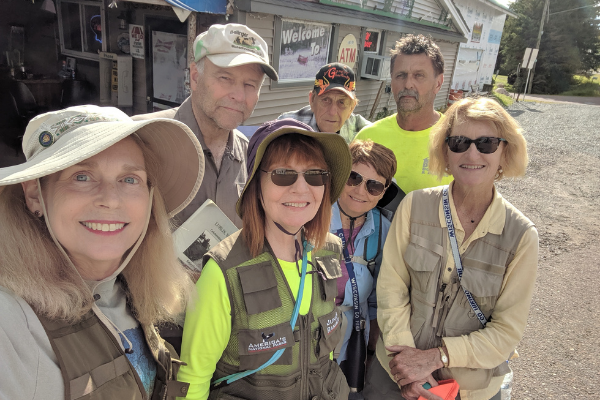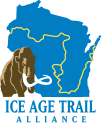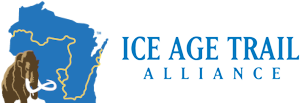By Mary Cieslewicz, Thousand-Miler

Anyone who hikes the Ice Age National Scenic Trail speaks enthusiastically about its fauna, flora, and geological features. Each hike offers lessons on myriad topics: beavers, butterflies, derechos, erratics, fossils, flowers, and ticks. In addition to traversing natural spaces, the Ice Age Trail is also composed of connector routes. These rural roads link off-road sections of Trail together, and in many cases, they bring hikers into cities and towns. The designers of the Ice Age Trail intentionally placed the Trail near populated areas, hoping close and easy access would increase its usage.
Knowing many aspiring Thousand-Milers merely tolerate road miles and other hikers eschew them entirely, I devote this essay to the joy of hiking connectors, hoping to inspire an appreciation for the miles marked not by yellow blazes but by white stripes.
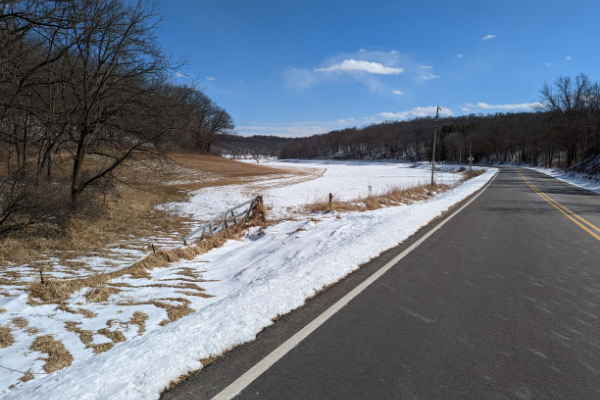
While hiking on the Ice Age Trail, I had an epiphany: The Trail’s proximity to people, either townspeople or rural residents along the connector routes, enhances the chances people from distant parts of the state might also find connections. I owe this realization to a summer’s day chance meeting on Fern Avenue, a Marquette County connecting road, when I paused to talk to a man working in his farmyard carving a totem pole. As we talked, I learned about Marcus Frank’s woodworking passion, which included making an exquisite barn quilt just the year before. Like a trail in the woods, our conversation meandered. Marcus described deer conservation in the county and taught me about sandpoint wells, common in areas with fast-draining sandy soil left behind by glaciers.
“I was surprised you stopped to talk with me,” said soft-spoken Marcus, just as I was about to leave.
“I’m glad I did,” I said. “It was great to meet you and learn about the totem pole, the trees, the farm, and the area.”
“When you talk to people,” he said, “you find that most people are friendly.”
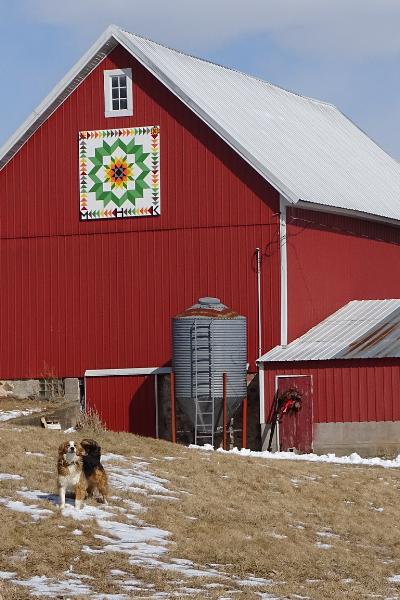
That simple, frank statement became my steady companion on every subsequent hike. As it happens, “connector” is the perfect name for these routes. They make it possible to connect to the people living in Wisconsin today as you walk in the footsteps of those who lived here ten thousand years ago.
I don’t make it my mission to talk at length to every person, but I am friendly and aware, looking for signs that someone might want to talk to a hiker wearing a reflective vest passing by their house or farm. Over and over, a simple wave or hello to a person raking leaves, sitting on a porch, or even passing in a car, led to an informative or heartwarming conversation.
I stopped at the Fern Avenue farmyard because I was surprised to see someone carving a totem pole in the middle of Wisconsin. That’s how I met 88-year-old Marcus Frank and learned that he had watched the tree he was carving grow from a sapling he planted with his father into a giant pine. Pondering this chance encounter throughout the rest of my hike that day, I realized my moments with Marcus had enhanced my entire hike.
I decided to create a framework to shape future connector hikes. I settled upon four questions to consider before the start of any connector and to guide me on the journey:
- Who will I meet?
- What will surprise me?
- What will I learn?
- How are the lives of the people here affected by the terrain the glaciers bequeathed to them?
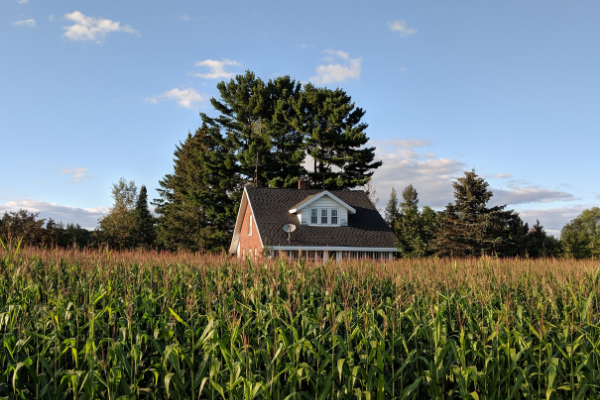
Framing each hike with these questions has made every connector hike an adventure. Rarely have I finished a hike without answers. In addition, over time, I developed hiking strategies and activities, adding fun to road miles.
Ten Tips for Hiking Connectors on the Ice Age Trail
1. Be comfortable.
Check the elevation change, the wind direction and speed, and the direction of the connector. Is it mostly north/south or east/west? I prefer maximizing the amount of Trail hiked downhill with the wind and sun at my back. Carry a small pack of emergency supplies. Day hikers, especially on roads, are least prepared for emergencies.
2. Plan a length of hike that leaves time for the unexpected to happen.
As you hike you will meet amazing local residents and encounter unexpected events you will want to pause to enjoy. Connectors are populated by creative and wise people eager to share knowledge about the nature and history of the part of the Trail they call home.
3. Be an ambassador for the Ice Age Trail.
Smile and wave at people in their yards and say, “I’m hiking the Ice Age Trail past your house/farm/business; your road/farm/land/dog is beautiful.” Don’t be surprised if this leads to a conversation. Be interested in people and what they are doing. You will discover you can connect through shared interests in ancestry, farming, art, books, geology, architecture, boating, birding, pets, kids, and even weather.
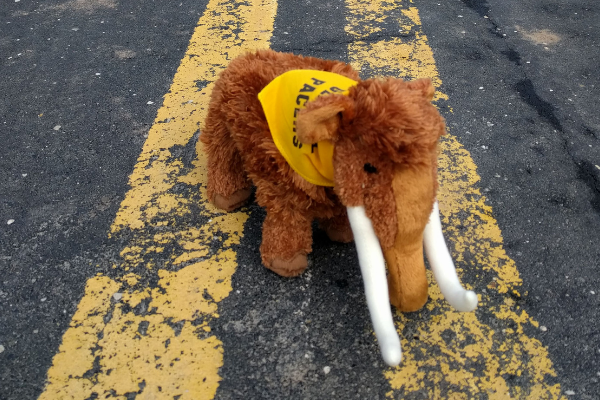
4. Learn what you can about living in the area by observing with your five senses.
The glaciers affected the land in various ways, leaving diverse beauty and diverse resources influencing local ways of life.
5. Keep an eye open for animals.
If you keep track, you may discover you will see more animals as you hike connectors than on the Trail, and I don’t mean just dogs.

6. Carry a bag and pick up cans.
It’s a nice way to say thank you to the people in the area, and I guarantee this practice will lead to other discoveries and conversations.
7. Look for glacial features.
Large formations such as moraines, eskers, and kames are easier to appreciate at a distance. Marvel at the gift of water from the Ice Age as you cross many bridges and pass countless lakes. Think of Wisconsin’s rich logging industry and the many logs floated on these rivers.
8. Consider what’s in a name.
Find the humor and history in the names of towns and streets, rivers and lakes, and even on tombstones in cemeteries you pass. Also, enjoy the whimsical and humorous signs local residents post in yards, on trees, and next to mailboxes.
9. Carry a book.
Bring a book you’ve finished reading in your backpack so you can take from and add to the many Little Free Libraries you will encounter along the way. (The first Little Free Library was created by Todd Bol in Hudson, Wisconsin. There are now more than 100,000 Little Free Libraries worldwide.)
10. Create your own fun.
Write limericks, haikus, or songs about the Trail, do a ROYGBIV rainbow hunt of colors on the connector, or carry a stuffed mammoth or other creature to pose in fun photos. You may also simply enjoy the fact you can often walk side-by-side with a hiking buddy on a lightly traveled connector route.
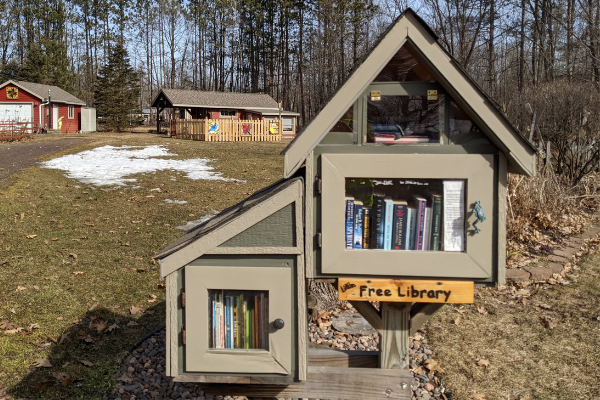
As you hike connectors, expect the unexpected. Be open to the possibilities. If there is an opportunity for a conversation or adventure, take it. You might think you should keep hiking and come back another day, but remind yourself: you might never pass this way again.
Pause to savor every inch of your thousand-mile journey. Remember, “Nature does not hurry, yet everything is accomplished” (Lao Tzu). Milk becomes butter, wooly caterpillars morph into moths, bees create honey, sap becomes syrup, cans are recycled, alpaca fur is woven into warm blankets, librarians transform children into readers, past meets present…and it happens, all in good time, and good times, on the Ice Age Trail.
